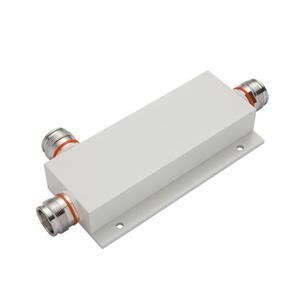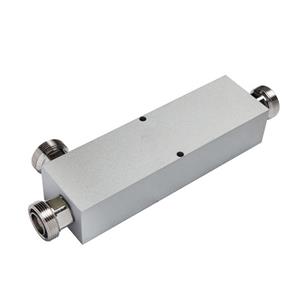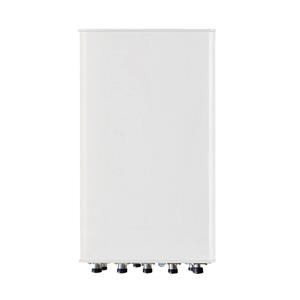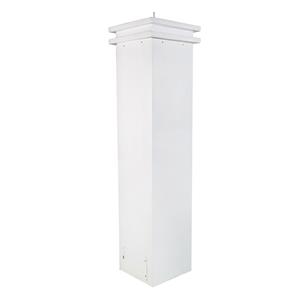5g time frequency dual aggregation to meet the challenge of 3.5GHz network deployment
Spectrum is the core resource in the field of mobile communication. 5g spectrum is distributed in multiple frequency bands, and each band has its own advantages and disadvantages. The world's first wave of commercial 5g network mainly uses higher 3.5GHz (3.3 ~ 3.8ghz, band N78) and millimeter wave band, and 2.6GHz (2.496 ~ 2.69ghz, band n41) band. The 3.5GHz band adopts TDD mode. Compared with 1.8GHz (band 3) and other FDD bands commonly used in 4G networks, 3.5GHz not only has a higher penetration loss, but also has a smaller proportion of available uplink slots. In terms of meeting 5g service requirements, there are three challenges: uplink bandwidth, uplink coverage and transmission delay.
Uplink bandwidth
TDD mode uses the same frequency for uplink and downlink, and adopts time division duplex transmission. The proportion of uplink and downlink in China's 3.5GHz band is 3:7, that is, 30% of the time slots are used for the uplink and 70% of the time slots are used for the downlink. Taking 100MHz bandwidth as an example, the available uplink bandwidth is only 30MHz, which is only 1.5 times of 4G single carrier.
Uplink coverage
The higher the frequency, the greater the spatial propagation loss and the shorter the coverage distance. The path loss of 3.5GHz uplink is 5dB higher than that of 2.1GHz band. In addition, the higher the frequency, the greater the penetration loss, resulting in shorter coverage distance.
Transmission delay
Due to TDD mode uplink and downlink time division transmission, the terminal can not send uplink data when receiving downlink data, which leads to additional waiting delay in the uplink transmission process. For the 3.5GHz band with 30% of the uplink, the waiting time is 0-2ms, with an average waiting time of 0.8ms. Similarly, in the downward direction, the waiting time is 0-1 MS, with an average waiting time of 0.2 Ms.
Time frequency double aggregation improves 5g network capacity and coverage performance
Combined with spectrum characteristics and industry status, how to improve 5g uplink performance with 2.1GHz and 700MHz has become a hot topic in the industry. ZTE proposes 5g time-frequency dual aggregation scheme to help operators effectively improve 5g network performance.
This technology is based on carrier aggregation, and makes use of the advantages of FDD and TDD to form complementary, so as to improve 5g uplink and downlink performance. FDD has low frequency and strong coverage, and there is no extra waiting delay during FDD transmission, but the bandwidth is usually small; TDD has large bandwidth, and both uplink and downlink are mature, and MIMO technology is applied, but the coverage and delay are weaker than FDD. After using 5g time-frequency double aggregation technology, as shown in Figure 1, the terminal can use FDD + TDD spectrum to transmit uplink and downlink at the cell center (near point) to obtain large bandwidth and low delay capability; at the cell edge (remote point), the terminal switches the uplink to FDD to improve coverage, and the downlink maintains FDD + TDD aggregation, thus improving the service experience rate.
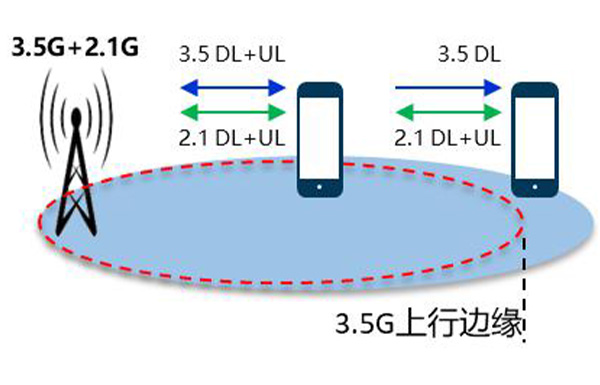
5g time-frequency dual aggregation technology skillfully cooperates FDD and TDD spectrum in time domain and frequency domain. On the basis of making full use of mature technology and without increasing additional cost of terminals, innovative inter carrier coordination and scheduling technology is introduced to solve the three challenges of 3.5GHz single frequency networking, and improve the performance of capacity, coverage and delay.
1) Increase 5g capacity
After the introduction of 5g time-frequency dual aggregation technology into 3.5GHz network, with the help of 2.1GHz frequency band, the uplink bandwidth of the terminal can be increased by 23%, and the downlink bandwidth can be increased by 28%. If the operator can use 50MHz bandwidth in the 2.1GHz band in the future, the uplink and downlink improvement space will be further expanded to 58% and 71%, with significant capacity improvement.
Generally, the number of uplink transmission channels of 5g terminal is the maximum of two. Uplink 2x2 MIMO transmission can be used in TDD band, and the equivalent bandwidth is doubled. However, if the terminal uses the traditional uplink carrier aggregation technology to connect FDD + TDD dual carriers, FDD and TDD can only use one transmitter each, while TDD uplink cannot use 2x2 MIMO transmission. Therefore, the uplink capacity after aggregation may not be as good as not activating carrier aggregation. In order to solve this problem, 5g time-frequency dual aggregation technology uses round robin mode to ensure the 2x2 MIMO capability of TDD carrier uplink in FDD + TDD carrier aggregation. Specifically, in TDD uplink slot terminal, dual transmitter is used for TDD 2x2 MIMO transmission, while in TDD downlink slot, FDD is used for uplink transmission immediately. This fast handover mechanism not only increases the available timeslot in uplink direction to nearly 100%, but also does not sacrifice TDD 2x2 MIMO capability.
Fig. 2 uplink and downlink timeslot relationship and uplink round sending mechanism for 5g time frequency dual aggregation
2) Enhance 5g coverage
If 5g is deployed in the 3.5GHz band, the coverage bottleneck will appear in the upstream direction first, even if the downlink coverage of the network is still OK. This "asymmetry" of uplink and downlink restricts the 3.5GHz "coverage" range and reduces the network utilization. Through 5g time-frequency dual aggregation technology, the terminal can connect FDD and TDD carriers at the same time, and continue to enjoy the large downlink bandwidth of TDD carrier at the cell edge, while the uplink transmission can switch to the FDD carrier with better coverage, and it will no longer be separated from 5g network service due to the uplink restriction.
Compared with single TDD carrier, dual carrier has larger service range and higher downlink rate than single FDD carrier. 2.2.2.3 times more than that of single carrier and uplink in 1GHz downlink. The synergy results in the revenue of 1 + 1 greater than 2.
3) Reduce 5g delay
In 5g time-frequency dual aggregation, the terminal can use FDD and TDD carriers to selectively receive and receive, and has available transmission time slot at any time without extra waiting, thus reducing the transmission delay. For example, the average uplink transmission delay of 3.5GHz TDD single carrier is about 2.2ms, which can be reduced to 1.5ms by 31% after using time-frequency double aggregation technology.
4) Flexible networking and easy deployment
Time frequency double aggregation technology can be applied to inter sector and inter station network, which has great flexibility. Operators do not have to force FDD and TDD to build a common station. Each FDD carrier on the network side can perform time-frequency double aggregation with multiple TDD carriers at the same time. Conversely, a TDD carrier can also perform time-frequency double aggregation with multiple FDD carriers. Each aggregation combination is dynamically established for a specific terminal.
In the case that FDD and TDD of some operators are not deployed in the same station, or the sector coverage is not completely overlapped, ZTE proposes flexible scheduling technology to relax the requirements, so that operators can easily apply time-frequency dual aggregation. These technologies include the use of static codebook and two PUCCH group.
In November 2019, ZTE completed the industry's first 5g time-frequency dual aggregation scheme verification based on 2.1GHz and 3.5GHz frequency bands. The verification results show that under the good channel environment, the uplink rate of single user can be increased by up to 40% compared with 3.5GHz single carrier. 5g time-frequency double polymerization technology is in the process of 3GPP standardization, and R16 is expected to be completed.

